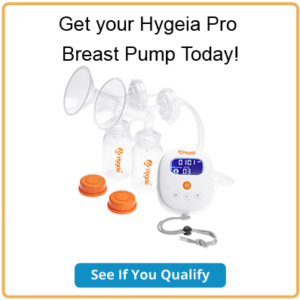
Most moms will tell you breastfeeding is both the most rewarding and the hardest thing they do. Know that you’re not alone, because even with the best intentions, sometimes things don’t go as planned. Never fear! Here’s a great guide from Today’s Parent on 15 of the most common breastfeeding challenges and their solutions. Check out the following excerpt about spitting up:
““The baby spits up after every feeding. Is she eating enough?” Most babies spit up sometimes, and some spit up a lot. If you have overactive letdown, your baby may just be getting too much milk and this is how he gets rid of it. If your baby is a “happy spitter” —that is, he spits up but doesn’t seem distressed and gains weight well, don’t be concerned. Just keep a towel handy. If your baby is spitting up and miserable, is not gaining weight or vomits so forcefully that the milk hits the wall six feet away, consult with your doctor or midwife to rule out medical problems.”
Is your baby fussy when it comes time to feed? Take a look at this excerpt:
“The baby is gulping, choking and always seems fussy at the breast.” Some mothers produce more milk than their babies really need and often the milk flows so fast and forcefully that the baby seems to be trying to drink from a firehose. These babies often have frothy green poops as well. A couple of strategies that can work: try switching sides every two or three minutes, to equalize the flow. If this isn’t helping, try what’s called “block feeding:” Pick a block of time —say, four hours —and every time the baby wants to nurse during that time, give him the left breast. The right breast will become quite full, but that’s the idea —the fullness signals the breast to make less milk. Then switch and use the other breast for the next four hours.”
Still struggling? We love this post from Babble that gives plenty of tips and tricks to solve eight of the most frustrating baby-feeding troubles, including what to do if you encounter plugged milk ducts:
“Your milk ducts deliver breast milk from milk-making cells in the breast through the breast tissue and nipple pores to your baby. When they become plugged, the results are hard, tender areas on the breast. The plug can occur deep in the breast or may be close to or right under the areola. If a mom has a milk blister, this will be on the nipple and will look like trapped milk, resembling like a pimple. Clogged nipple pores may prevent efficient emptying of the breast, which can lead to plugged ducts.
If plugged milk ducts are not properly tended to, they can become quite uncomfortable and sometimes lead to mastitis. Infrequent feedings and tight-fitting bras may cause plugged milk ducts. Treatment and care of the plug is very much the same as mastitis. The difference here is that there is no infection present. The goal is to resolve the plug quickly to avoid an infection.”
Babble suggests using these tips to treat plugged milk ducts:
- Use warm compresses.
- Massage gently before and during feeds.
- Use ice packs on your breasts after nursing or pumping to the affected area.
- Feed frequently to promote emptying!
- Rest.
- Talk with a lactation consultant for tips on prevention and healing.
- Call your doctor if you start running a fever or feeling achy-you may be developing mastitis.
- Vary feeding positions to promote emptying.

